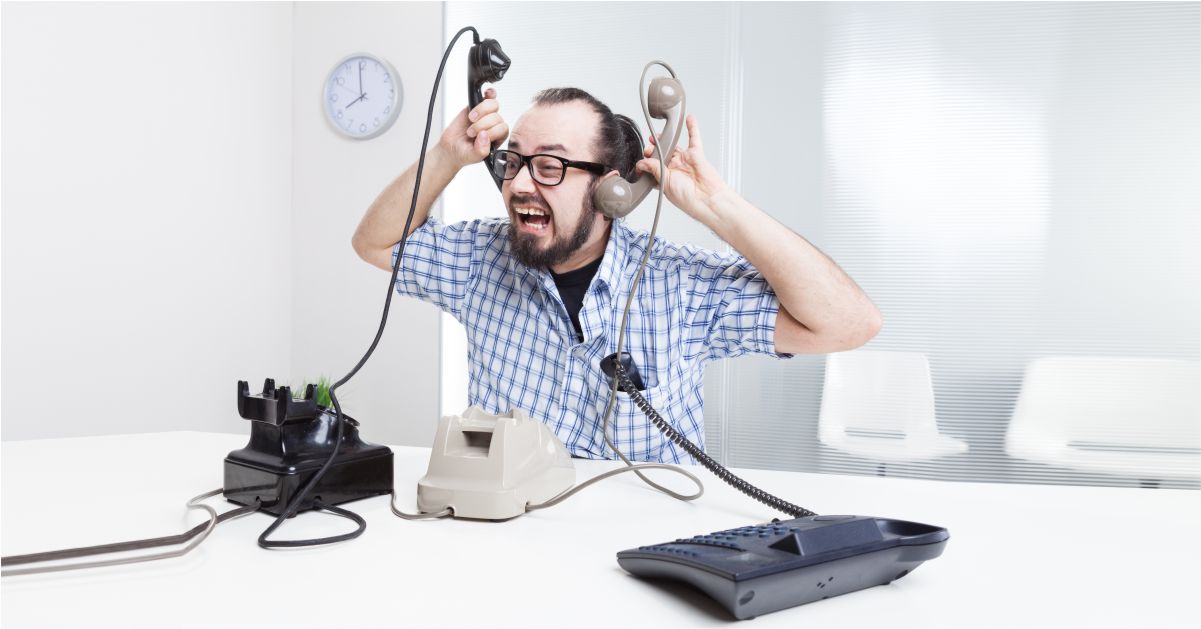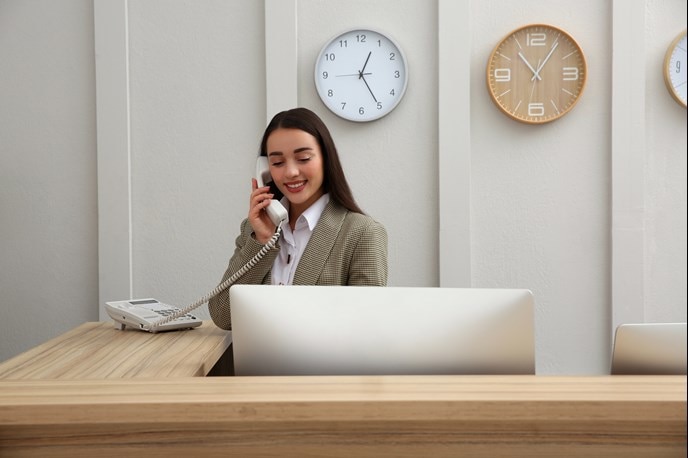All Categories
Featured
Table of Contents
- – Which Is Best Call Service: 24/7 Live Phone Ans...
- – Who Is The Best How To Start An Answering Serv...
- – What Is The Best Telephone Answering Service M...
- – What Is The Best How Much Do Answering Servic...
- – What Is The Best Phone Answering Services On ...
- – Who Is The Best Temporary Or Short-term Call...
Which Is Best Call Service: 24/7 Live Phone Answering Services For Small ... Company
This device and its successors were developed by Sava Jacobson, an electrical engineer with a private consulting organization. While early voice mail utilized magnetic tape technology, the majority of modern devices utilizes solid state memory storage; some gadgets use a mix of both, with a solid-state circuit for the outbound message and a cassette for the inbound messages.
"toll conserving" listed below) (business call answering service). This is helpful if the owner is evaluating calls and does not want to speak with all callers. In any case after going, the calling celebration ought to be informed about the call having been answered (in many cases this begins the charging), either by some remark of the operator, or by some greeting message of the TAD, or dealt with to non-human callers (e.
This holds especially for the Little bits with digitally stored welcoming messages or for earlier makers (prior to the increase of microcassettes) with an unique endless loop tape, separate from a 2nd cassette, committed to recording. There have been answer-only gadgets without any recording abilities, where the greeting message needed to inform callers of a state of existing unattainability, or e (phone answering).
Who Is The Best How To Start An Answering Service Business

about availability hours. In recording TADs the greeting usually consists of an invitation to leave a message "after the beep". An answering device that utilizes a microcassette to tape-record messages On a dual-cassette answerphone, there is an outgoing cassette, which after the defined number of rings plays a pre-recorded message to the caller.

Single-cassette voice mail include the outgoing message at the beginning of the tape and incoming messages on the remaining space. They initially play the announcement, then fast-forward to the next readily available space for recording, then record the caller's message. If there are numerous previous messages, fast-forwarding through them can cause a significant hold-up.
This beep is typically referred to in the greeting message, asking for that the caller leave a message "after the beep". TADs with digital storage for the taped messages do not reveal this hold-up, of course. A little bit might offer a remote control facility, whereby the answerphone owner can call the home number and, by getting in a code on the remote telephone's keypad, can listen to tape-recorded messages, or delete them, even when away from home.
What Is The Best Telephone Answering Service Melbourne Cbd Australia To Buy In 2023?

Thereby the machine increases the number of rings after which it answers the call (generally by two, leading to 4 rings), if no unread messages are currently saved, but responses after the set variety of rings (usually two) if there are unread messages. This allows the owner to find out whether there are messages waiting; if there are none, the owner can hang up the phone on the, e.
Some machines likewise allow themselves to be remotely triggered, if they have been turned off, by calling and letting the phone ring a particular a great deal of times (usually 10-15). Some provider abandon calls already after a smaller sized variety of rings, making remote activation impossible. In the early days of TADs a special transmitter for DTMF tones (dual-tone multi-frequency signalling) was regionally needed for remote control, since the formerly used pulse dialling is not apt to convey proper signalling along an active connection, and the dual-tone multi-frequency signalling was carried out stepwise.
Any incoming call is not recognizable with regard to these residential or commercial properties in advance of going "off hook" by the terminal devices. So after going off hook the calls must be changed to proper gadgets and just the voice-type is immediately accessible to a human, but possibly, nonetheless ought to be routed to a LITTLE BIT (e.
What Is The Best How Much Do Answering Services Cost? Local Business Tips ...
What if I informed you that you do not need to actually get your gadget when addressing a client call? Another person will. So hassle-free, right? Responding to phone calls doesn't need someone to be on the other end of the line. Efficient automated phone systems can do the trick just as efficiently as a live representative and sometimes even much better.
An automated answering service or interactive voice action system is a phone system that communicates with callers without a live person on the line - business answering service. When business use this technology, consumers can get the response to a concern about your company simply by utilizing interactions established on a pre-programmed call flow.
Although live operators upgrade the client service experience, numerous calls do not require human interaction. A simple taped message or directions on how a customer can retrieve a piece of information usually resolves a caller's immediate need - telephone answering service. Automated answering services are an easy and efficient way to direct inbound calls to the ideal individual.
What Is The Best Phone Answering Services On The Market Now
Notification that when you call a business, either for assistance or product inquiry, the very first thing you will hear is a pre-recorded voice greeting and a series of options like press 1 for client service, press 2 for queries, and so on. The pre-recorded options branch out to other choices depending upon the client's selection.
The phone tree system helps direct callers to the best individual or department utilizing the keypad on a smart phone. In some instances, callers can use their voices. It deserves keeping in mind that auto-attendant choices aren't restricted to the ten numbers on a phone's keypad. As soon as the caller has actually selected their first option, you can develop a multi-level auto-attendant that uses sub-menus to direct the caller to the right sort of help.
The caller does not need to interact with an individual if the auto-attendant phone system can manage their issue. The automated service can route callers to a worker if they reach a "dead end" and need support from a live representative. It is expensive to hire an operator or executive assistant.
Who Is The Best Temporary Or Short-term Call Answering Services
Automated answering services, on the other hand, are significantly less costly and offer substantial cost savings at an average of $200-$420/month. Even if you don't have actually dedicated staff to manage call routing and management, an automatic answering service improves productivity by permitting your team to concentrate on their strengths so they can more efficiently spend their time on the phone.
A sales lead routed to client service is a lost shot. If a consumer who has product concerns reaches the wrong department or gets insufficient responses from well-meaning employees who are less trained to manage a specific type of question, it can be a reason for frustration and discontentment. An automatic answering system can decrease the number of misrouted calls, thereby assisting your employees make better use of their phone time while freeing up time in their calendar for other tasks.
With Automated Answering Systems, you can develop a customized experience for both your personnel and your callers. Make a recording of your main welcoming, and just update it regularly to show what is going on in your organization. You can create as numerous departments or menu options as you want.
Table of Contents
- – Which Is Best Call Service: 24/7 Live Phone Ans...
- – Who Is The Best How To Start An Answering Serv...
- – What Is The Best Telephone Answering Service M...
- – What Is The Best How Much Do Answering Servic...
- – What Is The Best Phone Answering Services On ...
- – Who Is The Best Temporary Or Short-term Call...
Latest Posts
Receptionist Service ( Central Queensland)
Honest Bilingual Answering Service Near Me ( Australia)
Dependable Auto-attendant Answering Service Near Me
More
Latest Posts
Receptionist Service ( Central Queensland)
Honest Bilingual Answering Service Near Me ( Australia)
Dependable Auto-attendant Answering Service Near Me